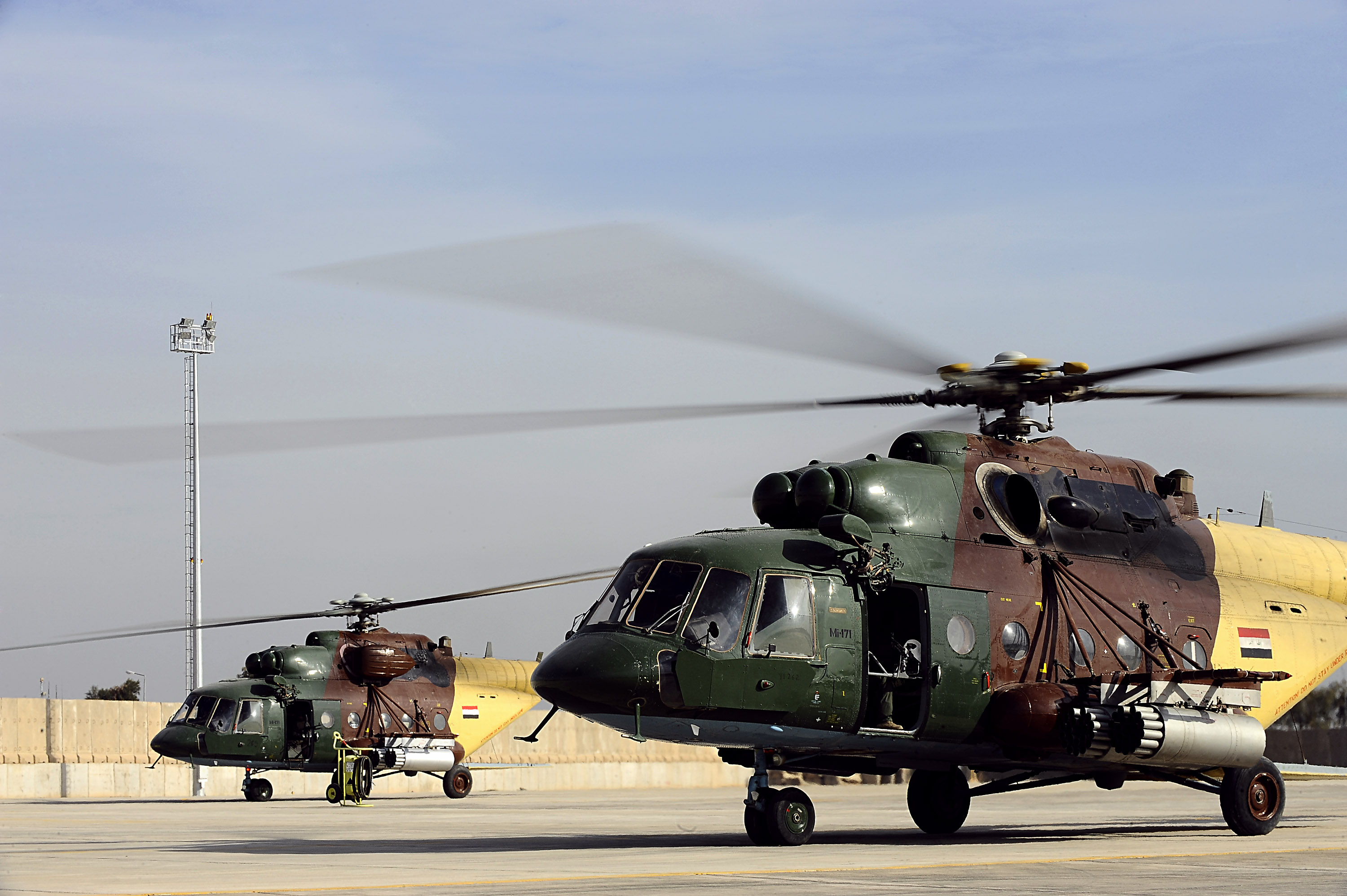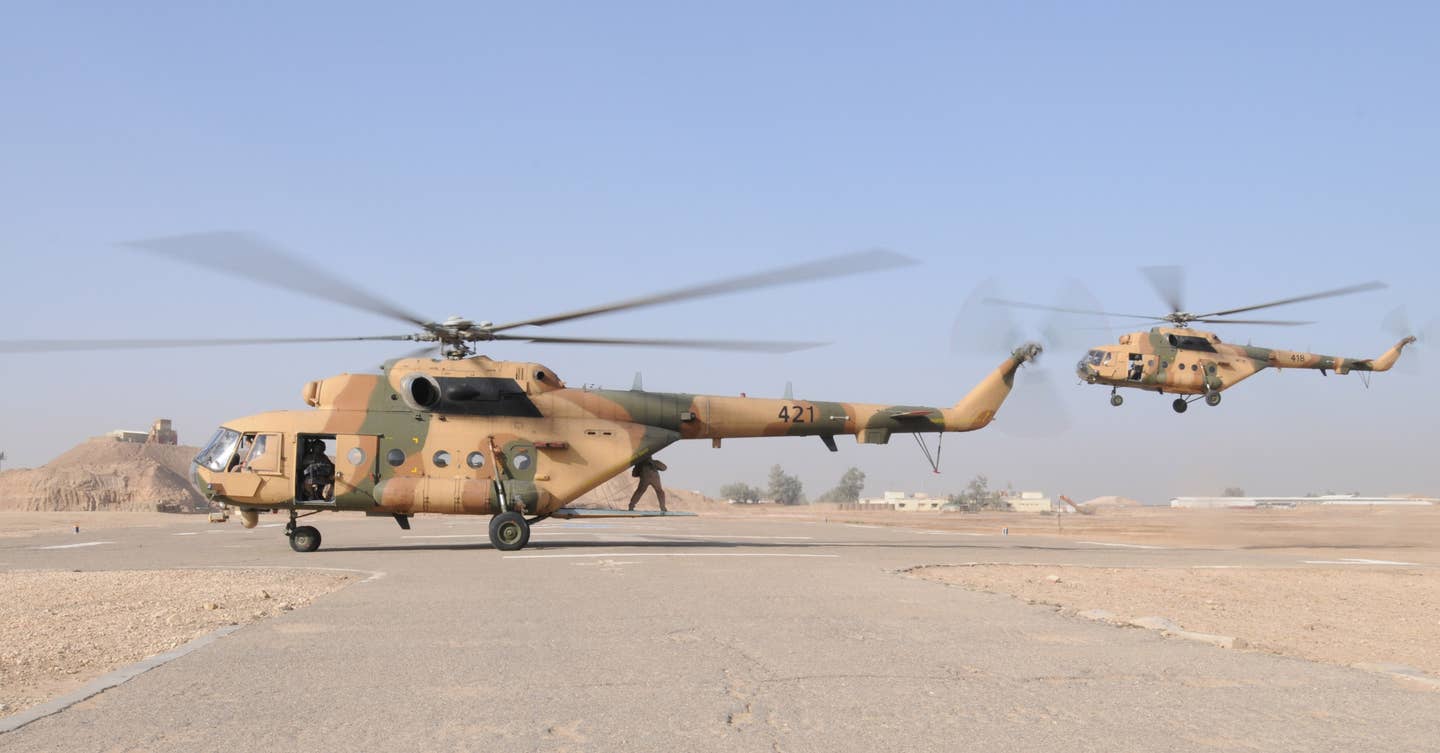Following Russia’s full-scale invasion of Ukraine, the United States and its allies slapped unprecedented sanctions on the Russian defense industry. These sanctions now appear to give US defense companies a chance to nibble into Moscow’s market share.
According to the most recent quarterly report on Operation “Inherent Resolve” issued by the US Department of Defense’s Office of Inspector General (OIG) on February 7, the Iraqi Army is now aiming to replace its Russian-made Mi-17 Hip armed transport helicopters with a combination of Bell 412EPXs and Bell 412Ms.
Operation Inherent Resolve refers to the coalition campaign led by the United States to combat ISIS in Syria and Iraq.
These plans have been considerably impacted by the drastically diminished supply of Mi-17 spare parts due to Russia’s need to maintain its own aircraft in the ongoing conflict with Ukraine.
The aviation branch of the Iraqi Army is also interested in purchasing a number of additional helicopters from Bell. This US defense company recently stated openly that it is attempting to take advantage of new market prospects created by the war in Ukraine.
The report said that the IqACC’s [Iraqi Army Air Corps] access to spare parts for their Russian-designed Mi-17 helicopters is limited due to the ongoing conflict in Ukraine.

The report added that most replacement parts support Russian military operations in Ukraine, and purchasing Russian-made components is subject to restrictions.
Thus, the Army plans to replace the fleet of Russian-built Mi-17 helicopters with 4 Bell 412EPX and 16 Bell 412M medium-lift helicopters.
The OIR quarterly report states that the Iraqi Army hopes to purchase the US-made helicopters under the US Foreign Military Sales (FMS) program, through which the US government aids in the sale.

The Bell 412EPX, one of the most recent iterations of the wildly popular 412 line, was initially developed in partnership with Subaru in Japan for that nation’s UH-X tender.
Based on the previous 412EPI model, the 412EPX has upgraded avionics, other mission systems, and a modern glass cockpit.
Bell recently unveiled the 412M as part of a larger initiative to provide different commercial types with built-in weaponry and other characteristics for use by the military and other security forces.
According to Bell’s website, the 412M can be equipped with CFD International’s Huey Ordnance Stores System, which includes door-mounted machine guns, hard points for various forward-firing weapons, and a sensor turret under the nose.
Besides this, the Iraqi Army wants to purchase 15 new Bell 407M light attack helicopters, along with any necessary avionics, rocket and gun systems, and pilot and maintenance training, to replace the ISF’s aging 407 fleets.
Additionally, the Iraqi Army seeks to buy 15 new Bell 505 training helicopters to replace the ISF’s aging Bell 407 and OH-58 training fleet.
The base Bell 407 was a modification of the Bell 206L-4 LongRanger light helicopter that also included capabilities designed for the OH-58D Kiowa Warrior armed scout helicopter used by the US Army.

The OIR study points out that the Iraqi Army already uses a variety of Bell 407 types, including armed IA-407s and enhanced 407GX variants.
The enhanced 407M is yet another illustration of Bell’s new line of militarized commercial types. This helicopter features fully digital cockpits and TekFusion mission and weapons management systems, allowing it to be equipped with laser-guided missiles in tandem with an electro-optical system.
Bell Textron Canada, a Textron wholly-owned subsidiary, manufactured the light helicopter Bell 505 Jet Ranger X. Bell 505 is regarded as the best platform to train prospective military pilots globally and get them ready for difficult missions because of its cutting-edge technologies and versatility.
Meanwhile, it is anticipated that the procurement of Bell 505s will be funded by Foreign Military Financing (FMF), which is direct US support in the form of loans or block grants.
The report does not refer to any operational difficulties the Iraqi Army may be having with its Mi-24/Mi-35 Hind or Mi-28NE Havoc attack helicopters, nor does it disclose any short-term replacement plans.
Sanctions Begin To Impact Russian Exports
The availability of spare parts for military helicopters and other Russian weapons continues to be hampered by the crisis in Ukraine, as previously reported by the EurAsian Times.
The fact that Western sanctions are currently crippling the whole Russian defense sector might significantly exacerbate these problems.
Other nations may find themselves in similar constraints when maintaining the weapons developed in Russia. An official from the White House has already stated that they are interested in using the current geopolitical climate to promote US-made weapons as alternatives.

The Countering America’s Adversaries Through Sanctions Act (CAASTA), passed before Russia’s full-scale invasion of Ukraine, gives the US government the authority to impose sanctions on nations that purchase weapons and other military equipment from Moscow.
Experts believe it will become exceedingly challenging for nations that have relied on Russian weaponry to obtain even the most basic supplies from Russia’s defense industrial base.
Nevertheless, the modernization of Iraq’s helicopter fleets may herald the start of a bigger pattern in which nations turn to western-made weapons as an alternative to Russian defense equipment.
- Contact the author at ashishmichel(at)gmail.com
- Follow EurAsian Times on Google News



